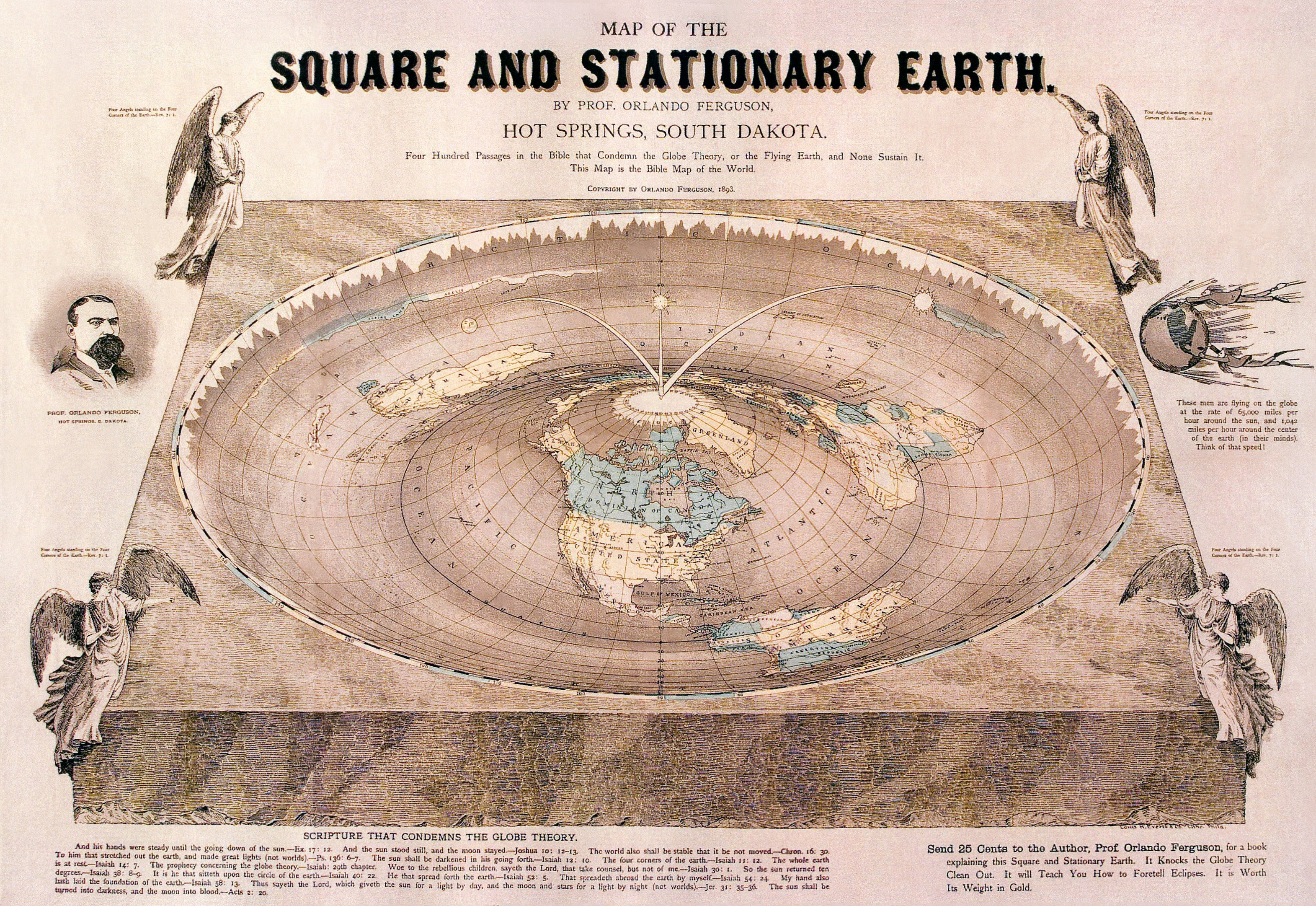
Flat Earth
Flat Earth is an archaic and scientifically disproven conception of the Earth's shape as a plane or disk. Many ancient cultures subscribed to a flat-Earth cosmography. The model has undergone a recent resurgence as a conspiracy theory.[1]
This article is about the disproven cosmological model. For modern-day beliefs that the Earth is flat, see Modern flat Earth beliefs. For the historical misconception that people during the Middle Ages believed that the Earth was flat, see Myth of the flat Earth. For other uses, see Flat Earth (disambiguation).
The idea of a spherical Earth appeared in ancient Greek philosophy with Pythagoras (6th century BC). However, most pre-Socratics (6th–5th century BC) retained the flat-Earth model. In the early 4th century BC, Plato wrote about a spherical Earth. By about 330 BC, his former student Aristotle had provided strong empirical evidence for a spherical Earth. Knowledge of the Earth's global shape gradually began to spread beyond the Hellenistic world.[2][3][4][5] By the early period of the Christian Church, the spherical view was widely held, with some notable exceptions. In contrast, ancient Chinese scholars consistently describe the Earth as flat, and this perception remained unchanged until their encounters with Jesuit missionaries in the 17th century.[6] Traditionalist Muslim scholars have maintained that the earth is flat, though, since the 9th century, Muslim scholars tended to believe in a spherical Earth.[7][8]
It is a historical myth that medieval Europeans generally thought the Earth was flat.[9] This myth was created in the 17th century by Protestants to argue against Catholic teachings.[10] More recently, flat earth theory has seen an increase in popularity with modern flat Earth societies, and unaffiliated individuals using social media.[11][12] Despite the scientific facts and obvious effects of Earth's sphericity, pseudoscientific[13] flat-Earth conspiracy theories prevail. In a 2018 study reported on by Scientific American, only 82% of 18 to 24 year old respondents agreed with the statement "I have always believed the world is round". However, a firm belief in a flat Earth is rare, with less than 2% acceptance in all age groups.[14]
Education
Before learning from their social environment, a child's perception of their physical environment often leads to a false concept about the shape of Earth and what happens beyond the horizon. Many children think that Earth ends there and that one can fall off the edge. Education helps them gradually change their belief into a realist one of a spherical Earth.[138]